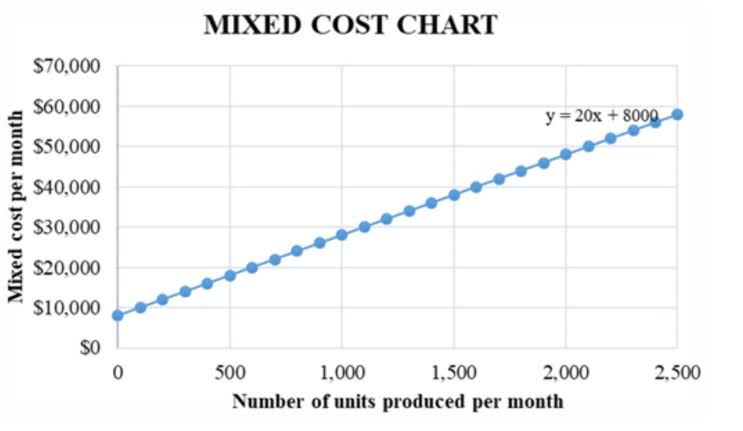Encumbrance: Definition, Example, and Types of Encumbrances - Alliance for Action AID
- Home
- Encumbrance: Definition, Example, and Types of Encumbrances
Jul 28 2021
Encumbrance: Definition, Example, and Types of Encumbrances

These advancements will streamline the encumbrance accounting process, allowing for more efficient tracking of future payments and expenses. Budgetary control involves additional processes such as validating transactions to determine whether spending is permissible or whether sufficient funds are available. Encumbrance accounting is only concerned with creating encumbrance journal entries for documents such as purchase requisitions and purchase orders.
Real Estate Encumbrances
- Encumbrance accounting is a budgeting method used primarily in governmental and not-for-profit organizations to track commitments for future expenditures.
- Budgetary control involves additional processes such as validating transactions to determine whether spending is permissible or whether sufficient funds are available.
- These commitments can include purchase orders, contracts, or any other type of financial obligation that has not yet been fulfilled.
- Or it might be a zoning regulation that prohibits you from building a structure you’d hoped to have.
- Encumbrances are payment commitments owed to a company’s vendor or creditors for goods and services that have not been received yet.
- One of the first steps in implementing encumbrance accounting is defining the encumbered amount.
- By tracking this information, financial analysis is easier to perform and a more accurate predictor.
The amounts assigned to such a future payment are encumbered on account of the underlying commitment. Pre-encumbrances allow departments to further commit funds Certified Public Accountant to facilitate financial management and are coded with balance type code PE. Internal Ecumbrances represent the commitment of funds generated by travel authorization documents and are coded with the balance type code IE. Using encumbrance entries can serve as a general planning tool and can predict cash outflow.

What are the potential risks of not using encumbrance accounting in a nonprofit

Organizations use budgetary controls to minimize maverick spending and avoid overspending. It allows government entities, nonprofits, and some businesses to more effectively monitor and control how much they spend. They’re better able to keep their expenditures within the allocated budget and more accurately predict cash flow. In conclusion, encumbrances are a critical concept in governmental accounting, ensuring that governments have sufficient funds to meet their obligations and commitments. Accurate encumbrance tracking is essential for compliance with government accounting standards, fiscal responsibility, budgeting and forecasting, and risk management. Encumbrance accounting is a budgeting method used primarily in governmental and not-for-profit organizations to track commitments for future expenditures.
Pre-Encumbrance
President Trump took action to close the southern border and terminate a widely used app. Strictly Necessary Cookie should be enabled at all times so that we can save your preferences for cookie settings. But, if the encumbrance amount has to be altered for any reason, that will either increase or decrease the appropriations account. A restrictive covenant is an agreement that a seller writes into a buyer’s deed of property to restrict how the buyer may use that property.

How to Record Encumbrances

A mechanic’s lien is a claim on personal or real property made by a claimant who has performed services on the property. For example, if a contractor made adjustments to your property that were never paid for, the contractor might establish a lien. Some encumbrances involving securities affect the marketability of those securities. For example, if an investor uses the securities in a brokerage account as collateral for a loan from the brokerage, they may not be able to sell them. Or, if the investor can sell them, the brokerage would be entitled to enough of the proceeds to repay the loan. An encumbrance is a claim against a property made by a party who is not the property owner.
Importance of encumbrance accounting

NonProfit+™ is business management software engineered with nonprofits in mind. Delivered on the powerful Acumatica platform, NonProfit+ brings a new level of functionality that empowers organizations to efficiently manage their finances. Your organization isn’t required to spend an entire encumbered amount in a single transaction. If it’s involved in multiple lawsuits, for example, it can encumber the potential liabilities for all of them, and then pay them out one at a time. In government accounting, for instance, encumbrances are leveled against the relevant appropriation account and are often used when there are multi-year contracts in place. The encumbrance is marketed in your organization’s accounts once you reserve the money.
- Encumbrance or commitment accounting is the process of accounting for and setting aside funds for future expenses that are yet to be paid.
- For example, a utility company may have the right to run a gas line through a person’s property, or pedestrians might have the right to use a footpath passing through that property.
- An encumbrance is a claim or right held by someone other than a property owner that can affect how someone might use the property as well as their ability to sell it.
- It is important for buyers of real estate to be aware of any encumbrances on a property since these will often transfer to them along with ownership of the property.
- Overall, it can assist in making purchasing information more transparent and easily accessible when needed to enable tracking and overspending prevention.
- The company has set aside this amount, but hasn’t been paid yet as the goods or services haven’t been supplied.
Frequently Asked Questions about Encumbrance Accounting
This approach helps in monitoring spending by reserving funds for specific purchases, ensuring that budgeted amounts are not overspent and that financial resources are appropriately allocated. It plays a vital role in fund accounting by enhancing transparency and accountability in the management of encumbrance accounting public funds. This is done before creating and collecting the underlying documents, such as purchase requisitions and purchase orders. Encumbrances should be monitored regularly to ensure accurate tracking of financial commitments.
This allows organizations to determine the amount of funds available for future spending. As a result, they’re able to avoid exceeding the allocated budgets and minimize overspending. The accounting term encumbrance can sometimes be mistaken for real estate encumbrance. Encumbrances are the money set aside by a company for payments to its suppliers or creditors for future expenses. When a vendor has been selected, and a purchase order or recurring purchase has been set up with the vendor, the payment becomes legally due. The funds allocated for the purchase can now not be used for any other purpose or aren’t taken back from the encumbrance account by the company.
Drafting a Pre-Encumbrance
Your company has received the goods or Accounting For Architects services that were initially ordered and now must pay back the vendor’s invoice. Money from the encumbrance account is moved into the appropriate account to pay the invoice, and accounts payable handles the vendor payment. An encumbrance balance refers to restricted funds that have been set aside for known future expenses of a company.
- Open Hours of AFAA: Mon - Fri: 8.00 am. - 6.00 pm.
- Hai Tarawa, Head office, Juba, South Sudan
- +211916165022 , +211 918505019, +211 918505019

Leave A Comment